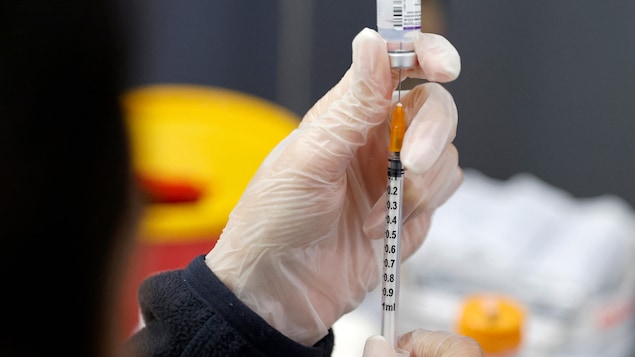It is the citizens of Grandes-Piles, in the MRC of Mékinac, who are at the top of the list. The coverage rate for the second dose is the highest among the 120 localities covered by the CIUSSS-MCQ. 88% of residents aged five and over received their two doses of the COVID-19 vaccine between December 2020 and May 2022. The five localities with the highest vaccination rates are in the MRC of Mékinac with Lac-aux-Sables, Saint-Adelphe, Saint-Séverin and St-Tite (tied). Lac-Édouard, in Haute-Mauricie, completes the picture. These municipalities all obtained a rate higher than 87% of vaccination coverage.
Conversely, the citizens of Sainte-Ursule, Saint-Mathieu-du-Parc and La Bostonnais seem to have been less likely to reach out. Moreover, the last two municipalities mentioned above did not exceed the 80% mark.
The table changes slightly for the booster dose, with Lac-Édouard in first place with 68.8%. Surprisingly, it is in Saint-Maurice that the rate is the lowest in Mauricie among the municipalities outside Aboriginal territories with 46.1%.
It is this data that has guided Public Health teams in deploying strategies to reach as many people as possible since December 2020, according to medical advisor Dr. Caroline Marcoux-Huard.
When we saw that it was more difficult in certain places, we intensified certain strategies and even deployed new ones such as mobile vaccination. We went to municipalities where it was more difficult. We also see that the response was better in villages where the average age is older.
Centre-du-Québec less vaccinated than Mauricie
South of the St. Lawrence, Sainte-Majorique-de-Grantham in the RCM of Drummond comes first. The parish of Plessisville, Saint-Célestin, Deschaillons-sur-Saint-Laurent and Saint-Eugène complete the ranking. These localities are the only ones to have exceeded 85% coverage.
But one thing stands out. The Centriquois seem to have been less inclined to roll up the sleeve than in Mauricie. Nearly 60% of municipalities in the region have not crossed the 80% threshold according to CIUSSS MCQ data, while this rate is only 10% in Mauricie.
Public Health does not have a clear answer to explain this phenomenon, but one of the hypotheses is the higher number of agricultural villages in Centre-du-Québec adds Dr. Marcoux-Huard.
There are more agricultural villages so there may be a perception of catching the virus that is different from towns or areas near major centres. On a day-to-day basis, residents of more agricultural areas will not take the city bus or go to shopping malls often. So their interactions are less. This is one of the assumptions
.
An issue in indigenous territories
It was in Wemotaci (72.7%), Wôlinak (68.7%) and Opitciwan (36.1%) that the coverage rate was among the lowest, even if the indigenous populations had priority access to the vaccine. .
For the coordinator of emergency measures of Opitciwan Martin Awashish, the community has not completely adhered to the vaccination. With all that we were hearing about residential schools and the Joyce Echaquan affair, it didn’t help to increase the level of confidence. Even though we did a lot of awareness, we did not achieve our objectives. Moreover, the state of health emergency is still activated on the territory.
According to Dr. Marcoux-Huard, it is also a question of the cultural past between the natives and vaccination. It didn’t help. Not just for COVID-19, but also for other campaigns. There is a certain distrust of vaccination.
Vaccination: it will be necessary to start again
Scientists and doctors agree that there will be a seventh wave this fall, as the number of cases has been growing since the abolition of most health measures. And it will be necessary to vaccinate the most vulnerable populations again, warns the professor of virology and infectious diseases at the University of Quebec at Trois-Rivières Lionel Berthoux.
The new BA.4 and BA.5 variants are effective in thwarting immunity. Especially in those who have been vaccinated or infected for more than six months, because the vaccine loses its effectiveness. With cases rising, it might be a good time for the most vulnerable to get the dose.
But the specialist is realistic, he does not expect to see the clinics crowded as they were last summer. There is a general fatigue, especially in the summer. They want to think about a lot of things, but certainly not the pandemic. Asking people to get vaccinated every six months is what we should be doing. But it’s more realistic to focus on target groups.
For its part, Public Health says it is preparing for the deployment of another campaign for this fall, which will mainly target RPAs, CHSLDs and the elderly.
Reference-ici.radio-canada.ca
